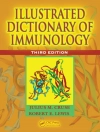This Monograph is a compilation of clinical experience and basic research by the author on the function and anatomy of the shoulder joint, with particular emphasis on biomechanics. The book provides deep and comprehensive knowledge about the shoulder based on the author’s over forty years of career. This book is unique in that it emphasizes the process of discovering new knowledge through searching for clinical questions or “whys” and solving them. The author shows how he tackled various problems with a great deal of medical curiosity. The chapters place much space on anatomy, function, and pathology, for correct treatment through an accurate understanding of the pathology.
The first part of this book explains the basic examination methods as clearly as possible, with abundant figures taken during patient consultations. Part two through four describes some diseases of the shoulder joint, including rotator cuff tears, instability, frozen shoulder, biceps disorders, and throwing shoulder, all of which are frequently encountered in daily practice. In part five, biomechanical research related to suture anchors is presented, and correct insertion angles and intervals are described. It is crucial to understand the surgical method correctly and question the commonly used techniques for better patient care. A clear explanation of long-standing debates, such as the deadman theory, is explained based on the evidence from his research. The last part presents two cases that are rarely encountered but are interesting from the perspective of functional reconstruction of the shoulder.
Shoulderology – Searching for “Whys” Related to the Shoulder invites shoulder surgeons, fellows, residents, and medical students to read the thought-provoking collection of evidence and interpretations of the common knowledge. It will be of interest to orthopaedic surgeons specializing in other areas. The author places a strong emphasis on educatingyoung researchers and provides valuable guidance apart from the basic research and clinical practice and hopes that the book will motivate the subsequent generations to pursue further study.
Table des matières
1 Introduction.- Part 1 Shoulder Examinations.- 2 Physical Examinations of the Shoulder.- Part 2 Main Shoulder Diseases – Rotator Cuff Tear.- 3 Rotator Cuff Tear.- Part 3 Main Shoulder Diseases – Shoulder Instability.- 4 Stabilizing Mechanisms.- 5 Traumatic Dislocation.- 6 Multidirectional Instability (Loose Shoulder).- Part 4 Main Shoulder Diseases – Others.- 7 Frozen Shoulder.- 8 Long Head of the Biceps.- 9 Throwing Shoulder.- Part 5 Biomechanical Research Related to Suture Anchors.- 10 Anchor Insertion Angle: Deadman Theory and its Interpretation.- 11 Minimal Safe Distance between Suture Anchors: Relationship between the anchor distance and pullout strength.- Part 6 Rare Shoulder Diseases.- 12 Facioscapulohumeral Muscular Dystrophy (FSHD).- 13 Trapezius Paralysis.
A propos de l’auteur
Eiji Itoi, MD, Ph D
Professor Emeritus, Department of Orthopaedic Surgery
President, Tohoku University Graduate School of Medicine












